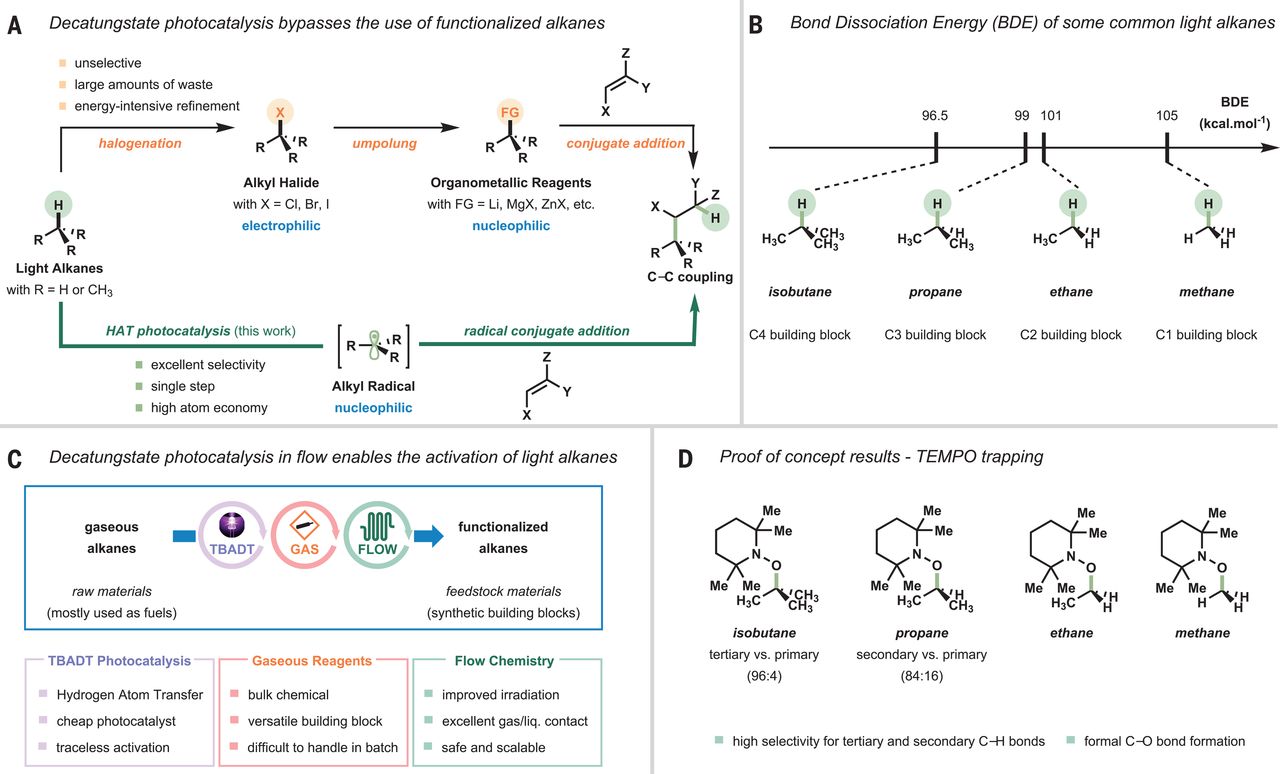New Light-based Method Proposed for C(sp3)–H Functionalizations of Light Hydrocarbons
Intrinsic inertness of gaseous hydrocarbons (e.g., ethane and methane) requires harsh reaction conditions to enable C(sp3)–H bond cleavage, resulting in low-yielding and unselective transformation to high-value added chemicals. Therefore, direct activation of gaseous hydrocarbons remains a major challenge for the chemistry community.
Motivated by such a challenge, a team collaborated by researchers from Eindhoven University of Technology, ShanghaiTech University and Shanghai Advanced Research Institute (SARI) of the Chinese Academy of Sciences reported a general and mild strategy to directly activate alkanes using decatungstate photocatalysis in flow. The study was published in the latest issue of Science on July 3.
The newly developed method aims to irradiate the molecules with light in the presence of a suitable catalyst, thereby immediately converting low-weight hydrocarbons into more complex molecules at room temperature and low pressure. To achieve that, researchers had to address the following challenges: first, the cleavage of very strong aliphatic C–H bonds with a bond dissociation energy (BDE) between 96.5 and 105 kcal mol-1 (Figure 1B) and second, appropriate technologies to bring the alkanes and catalyst into close proximity with a suitable catalyst and reaction partner.
Given the photoexcited decatungstateanion (W10O324-) has enabled a number of synthetically useful C(sp3)–H functionalizations, scientists reasoned that the use of flow technology is indispensable to facilitate the gas-liquid decatungstate-mediated processes. Through investigation to optimize reaction conditions and transformation scope, scientists solved these two problems by exciting the alkanes with UV light (about 365 nm) in the presence of a suitable catalyst tetrabutylammonium decatungstate (TBADT) in flow.
This new method paves the way for the inexpensive production of some medicines, in view of the low cost of catalysts to activate the gaseous alkanes and simplification of reactions. Further research is needed to apply intensified reactors to increase production capacity.

Fig. 1 Decatungstate enables the direct C(sp3)–H activation of light hydrocarbons. (Image adapted from Science)
Contact: SUN Yuhan
Shanghai Advanced Research Institute, Chinese Academy of Sciences
Email: sunyh@sari.ac.cn






